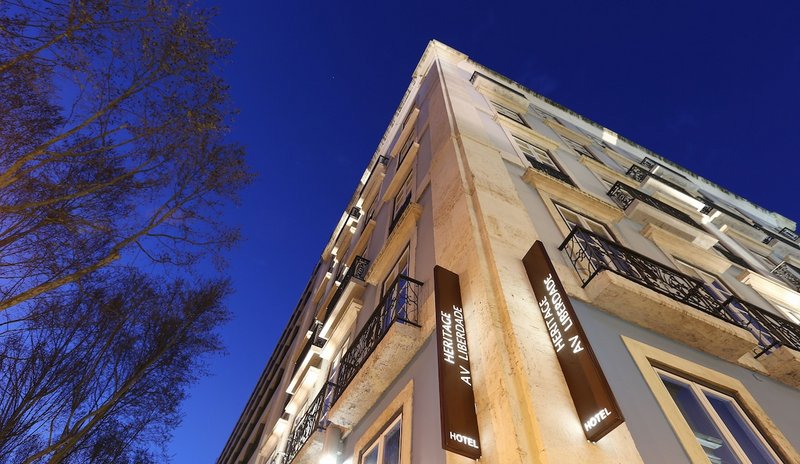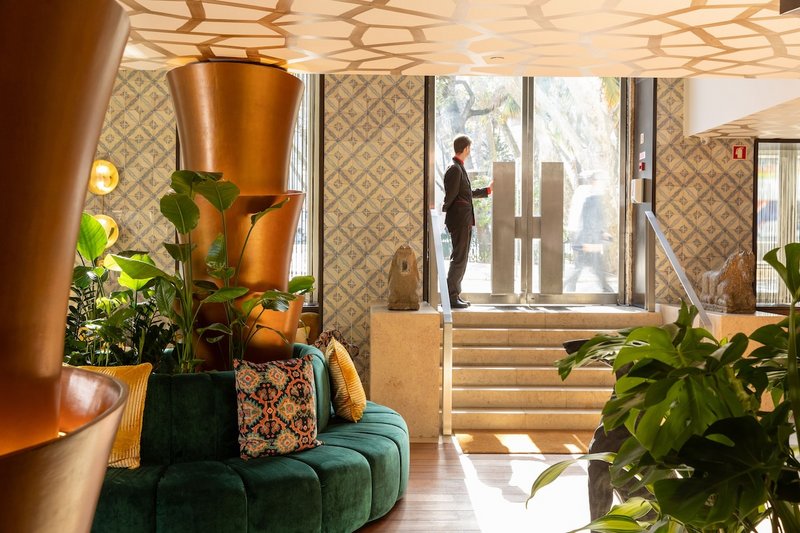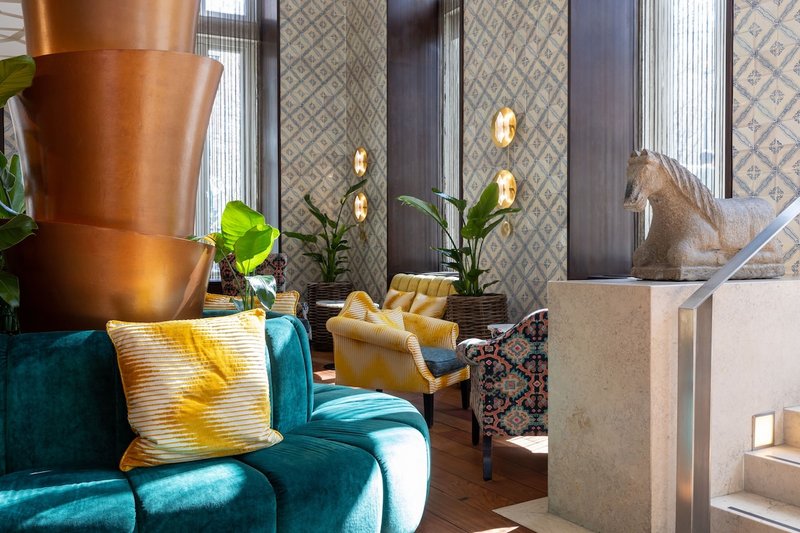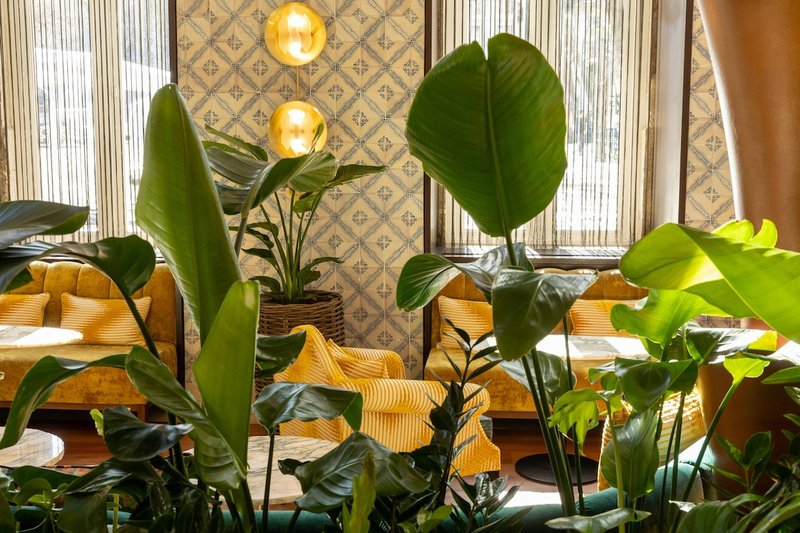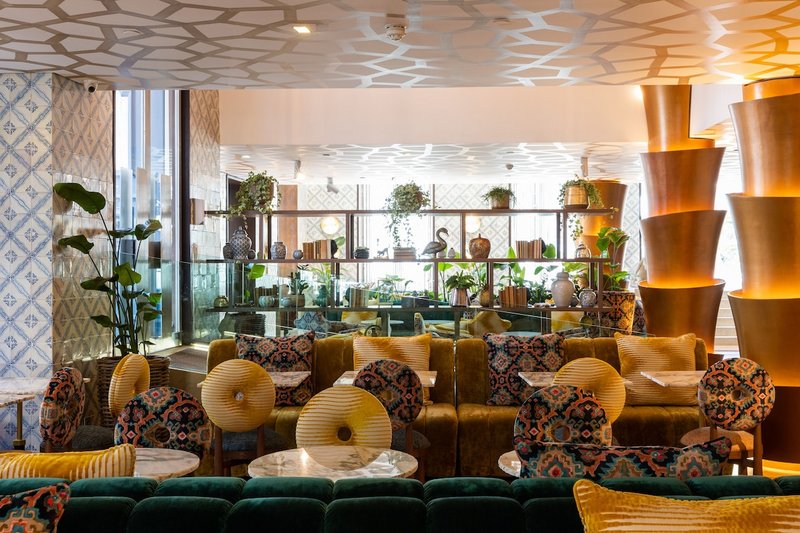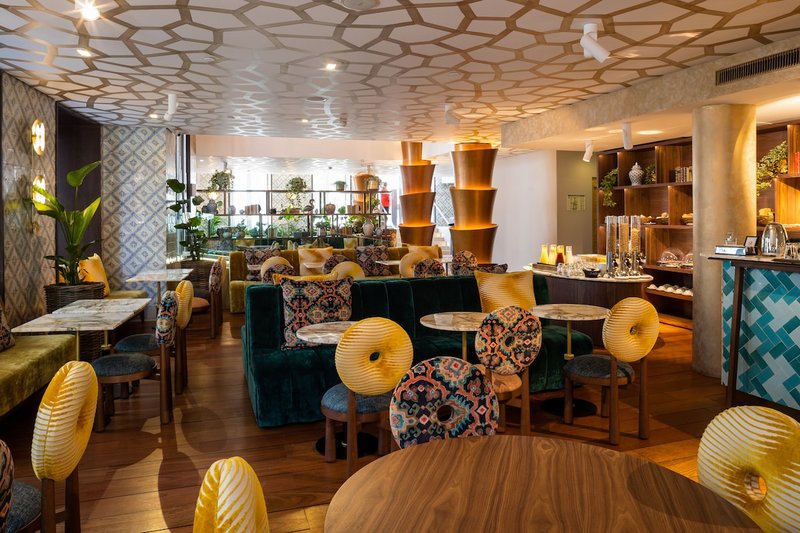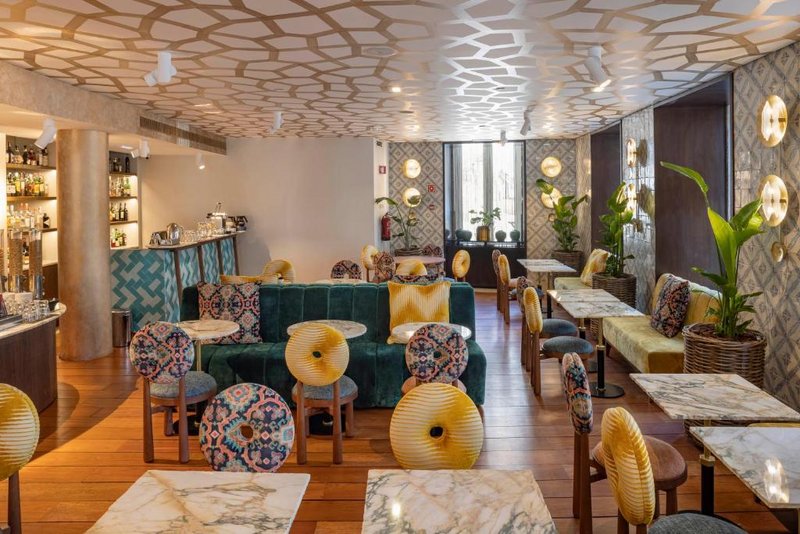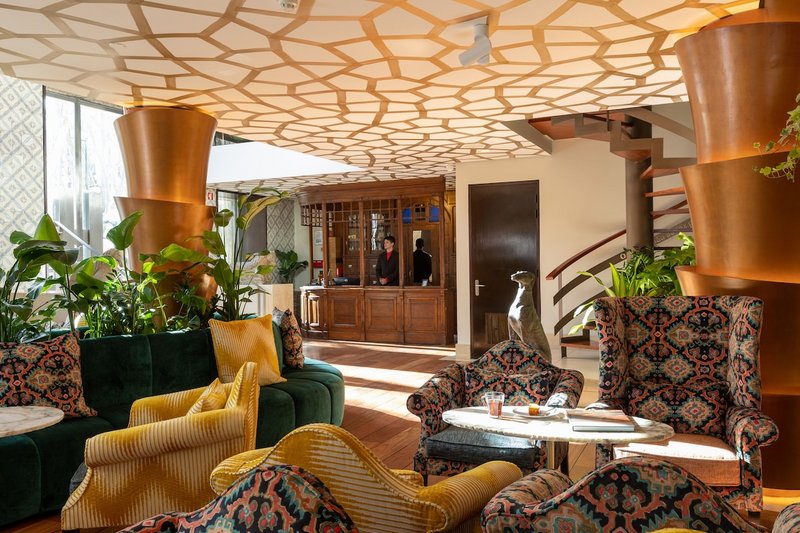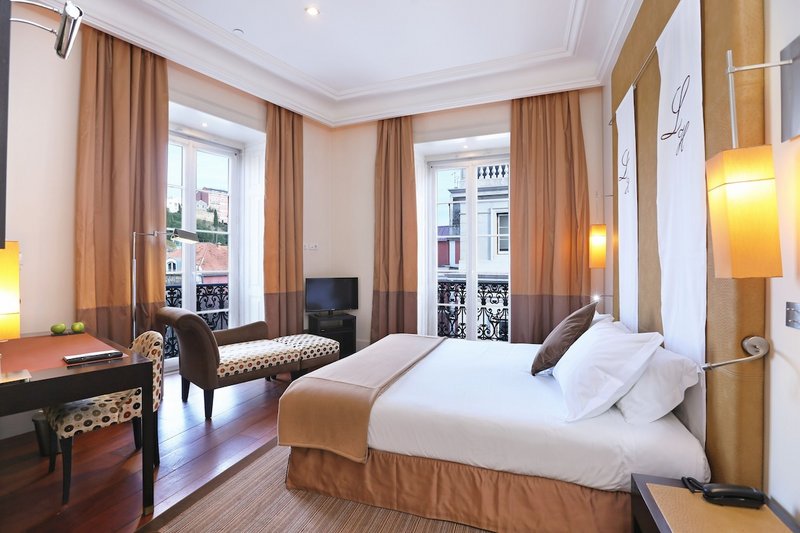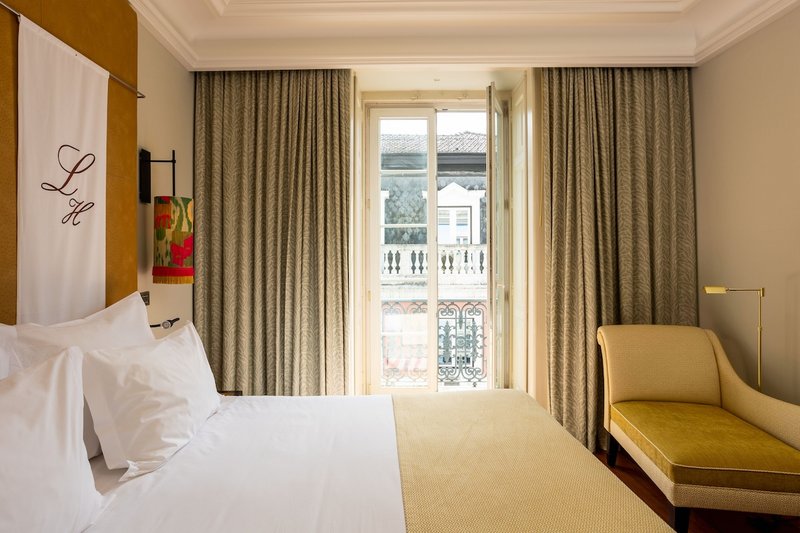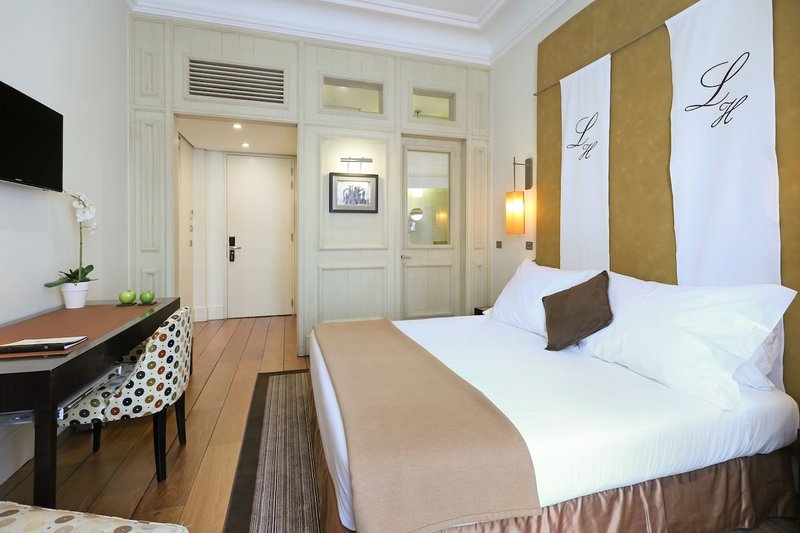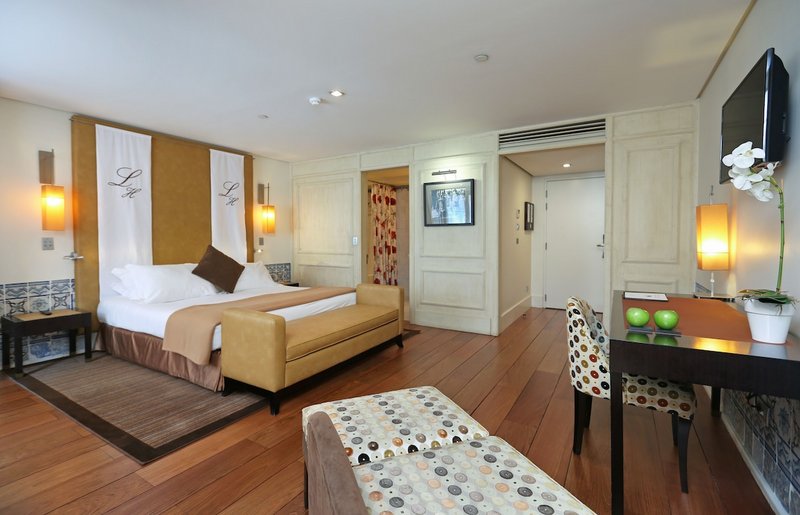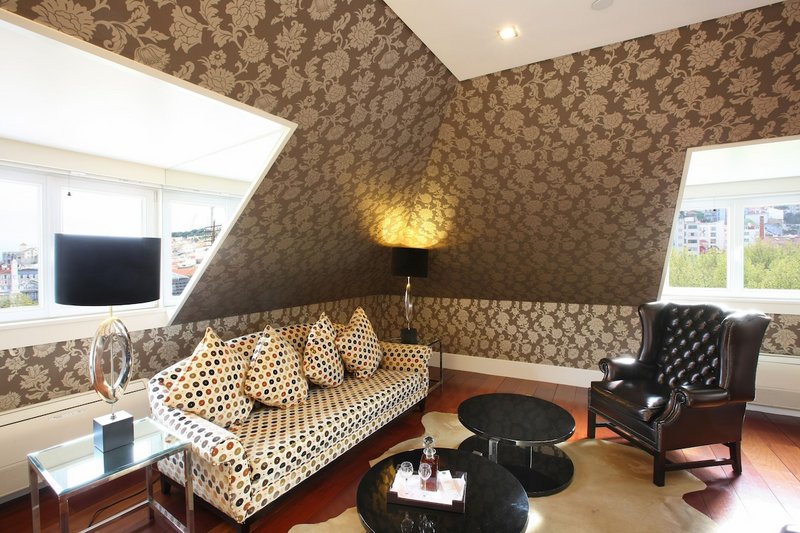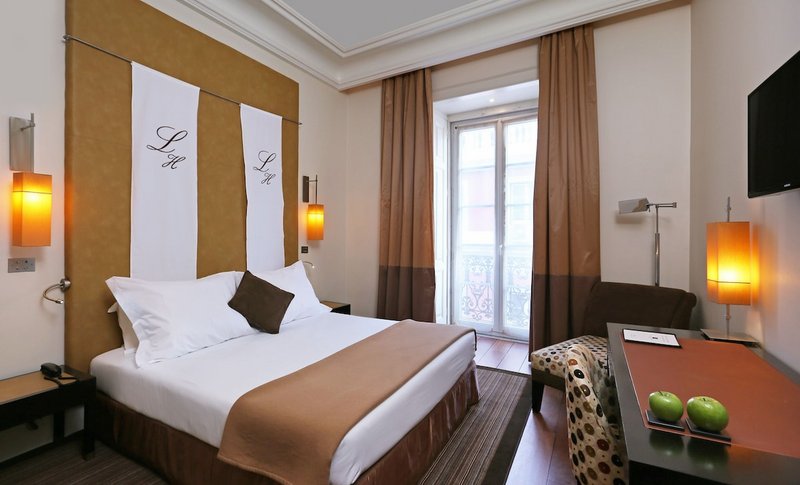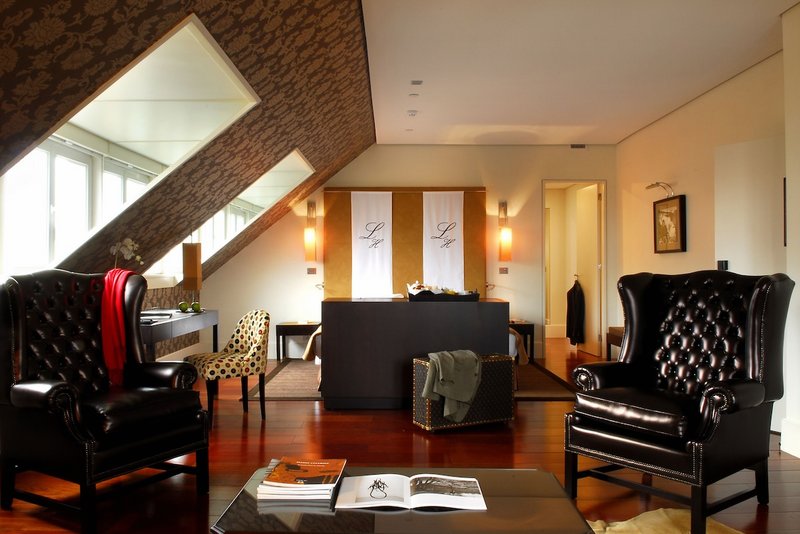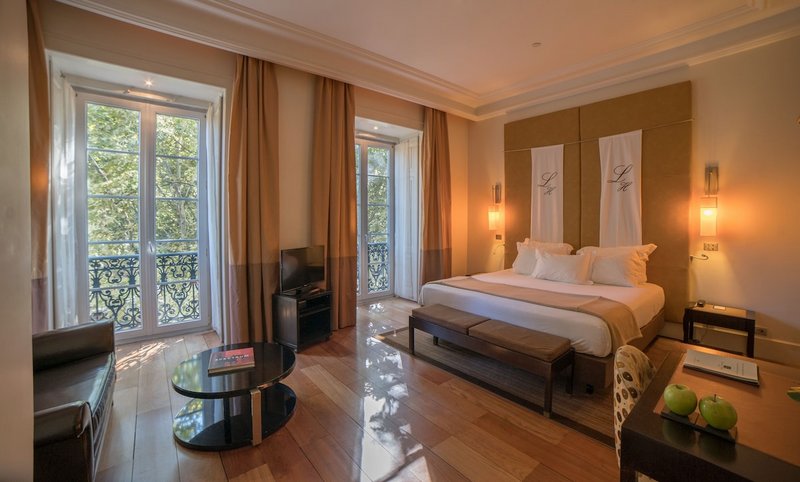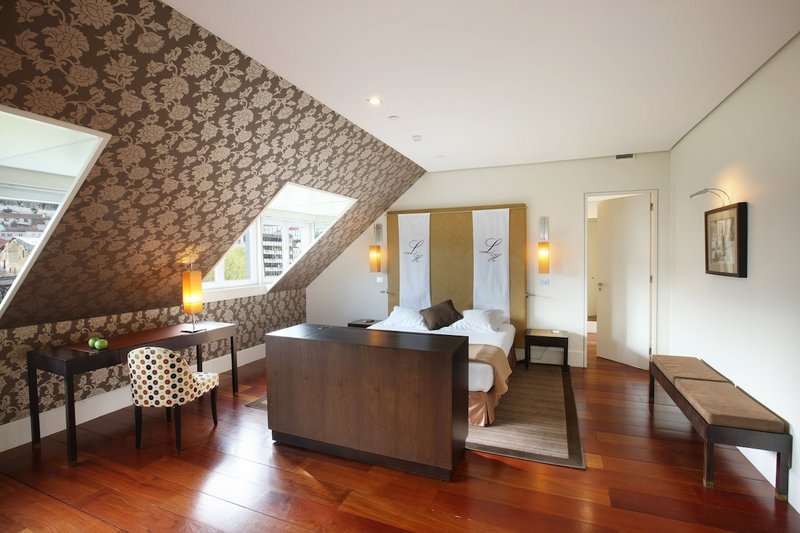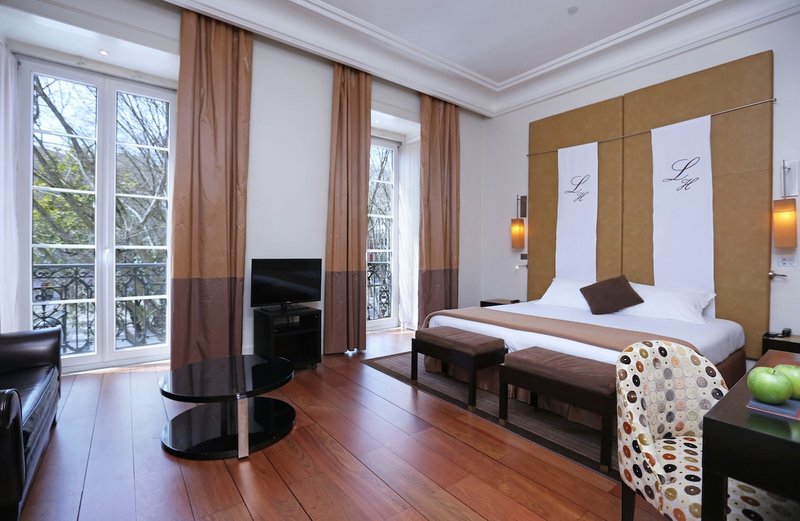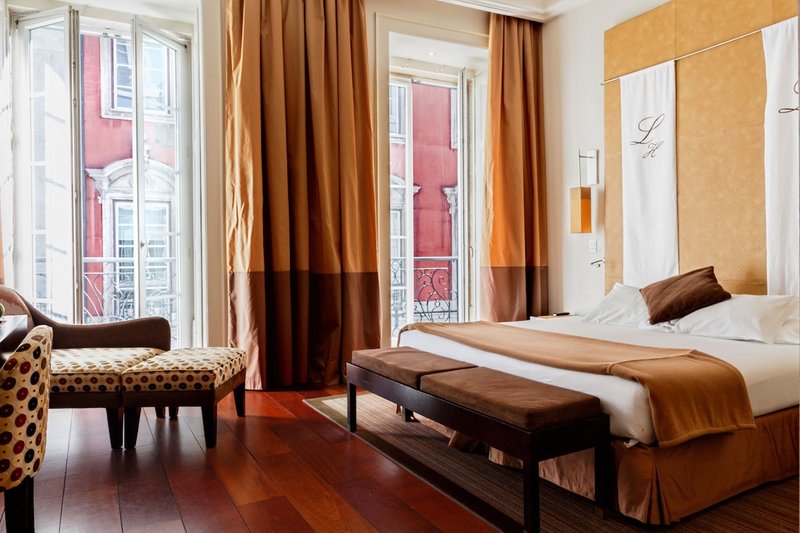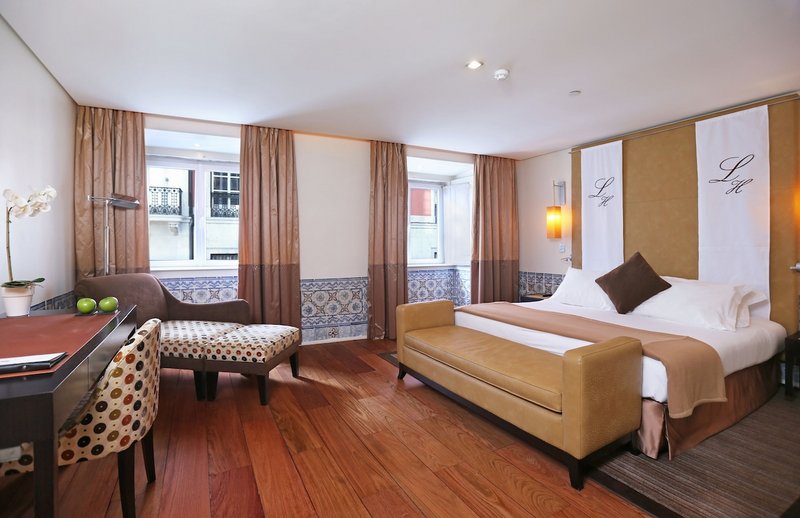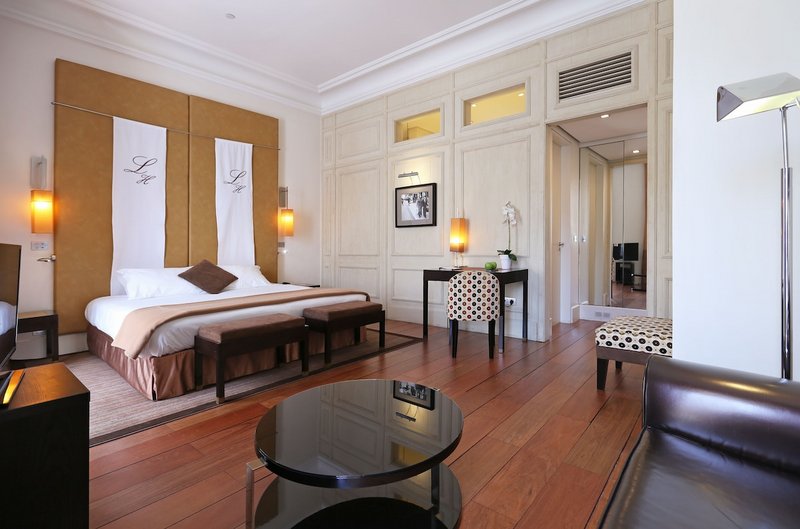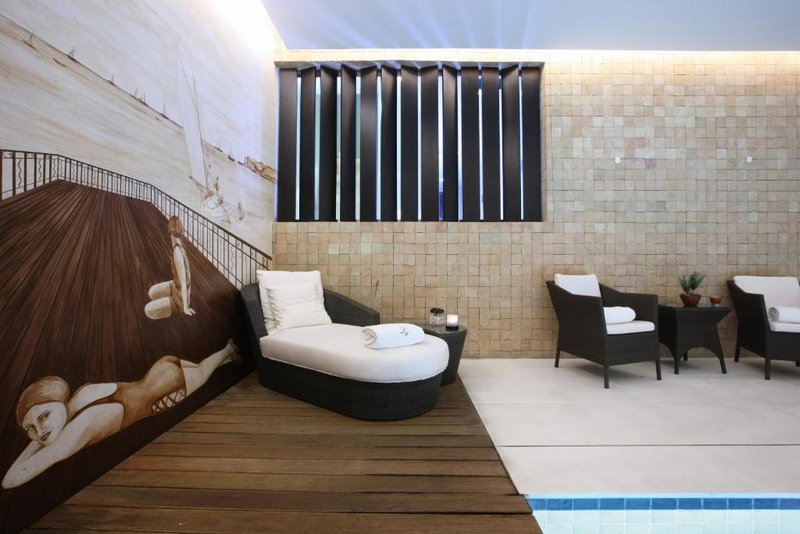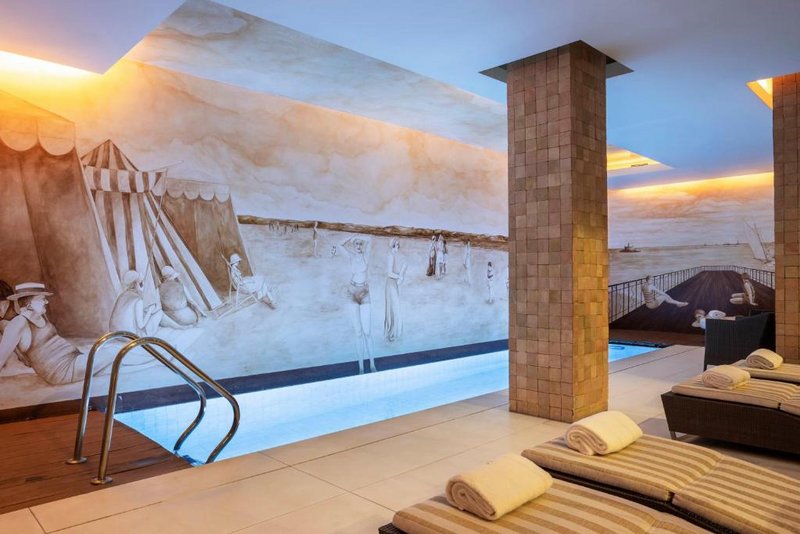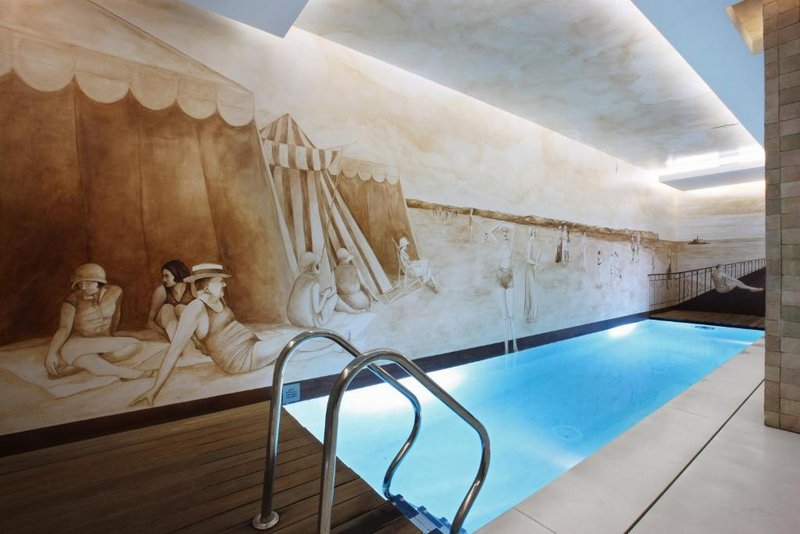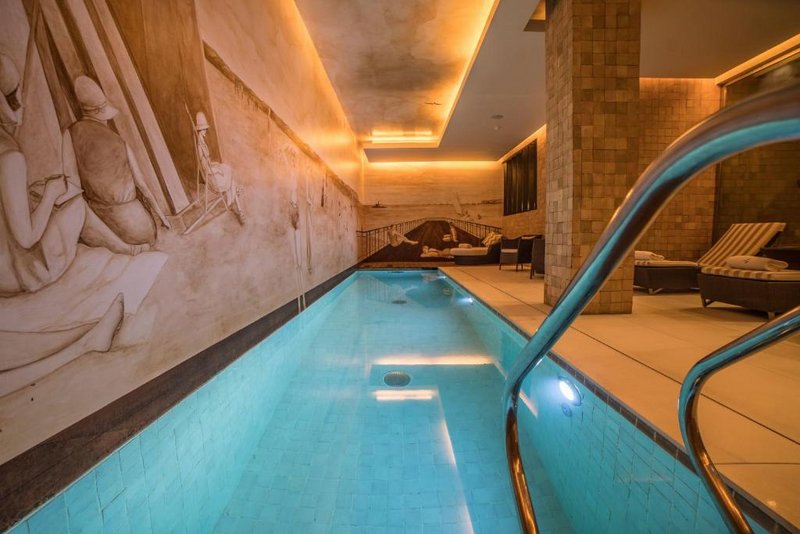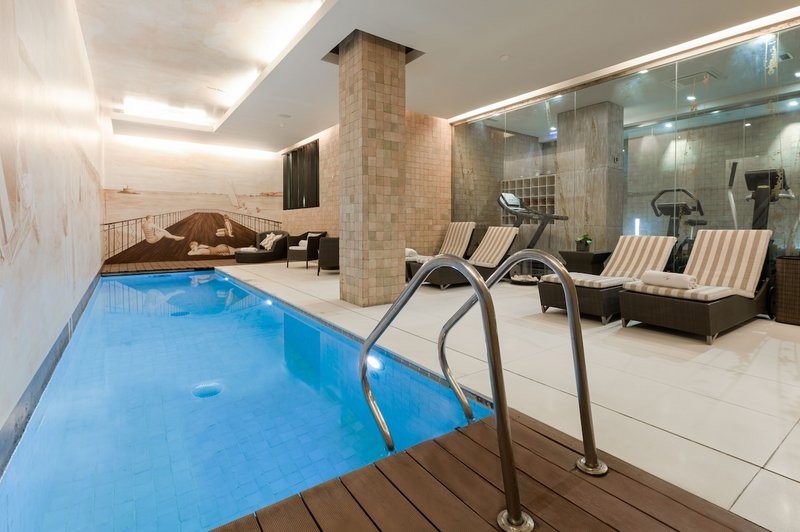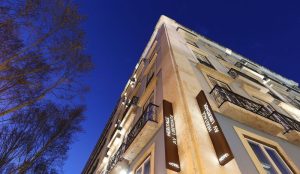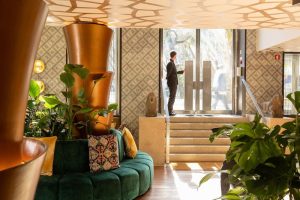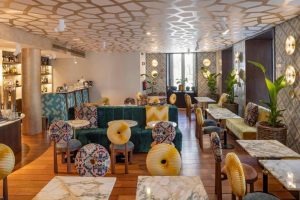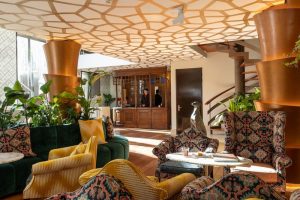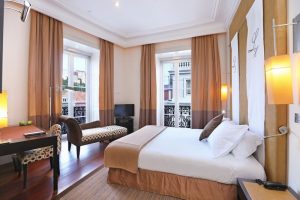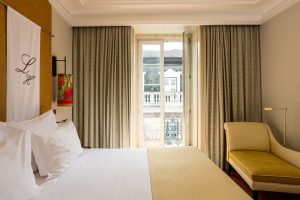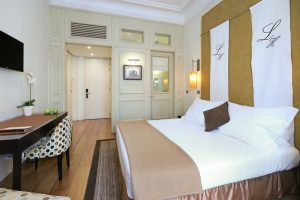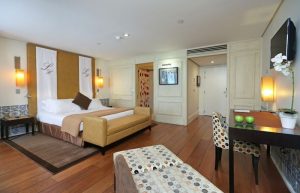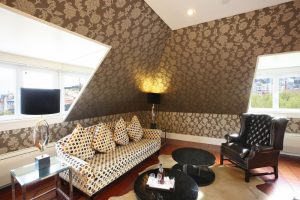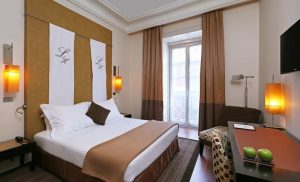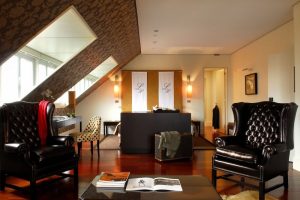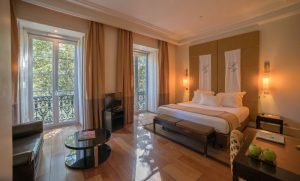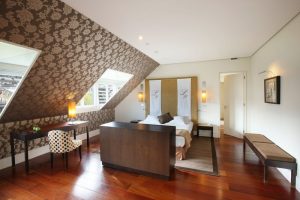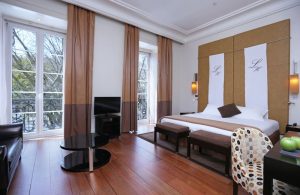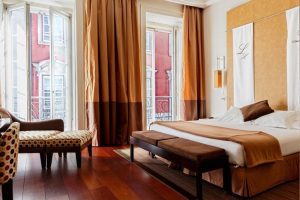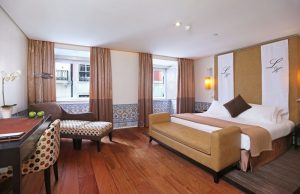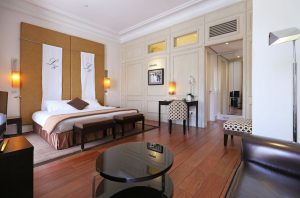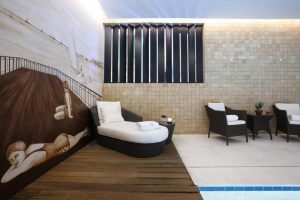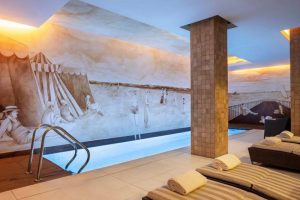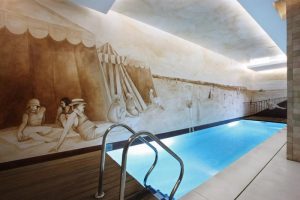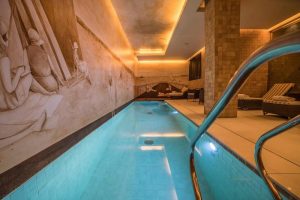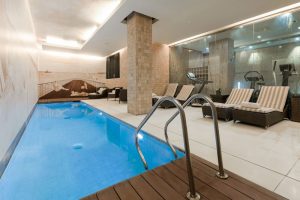Location: Lisbon, Portugal
Address: Avenida da Liberdade, 28, Lisbon, 1250-145
Description:
Heritage Avenida Liberdade Hotel. A bridge between modernity and the past in the historic centre of Lisbon. The blue façade of the Heritage Avenida Liberdade stands out in an architectonic unit on the prime artery of the capital, Avenida da Liberdade. Subject to careful rehabilitation, this 18th century building has come back to life by dint of a project of a unique nature.
Designed by Miguel Câncio Martins, whose interventions in the most cosmopolitan capitals are surprising for their daring and creativeness, the authorship of this rebuilding is expressed by the diluting of the physical frontiers between the city and the hotel.
The purpose of the rehabilitation was to keep as many original elements as possible, the 18th century façade, the ashlar, the veranda railings, the wooden main door and the shutters with their original iron work, as well as the Pombaline tiles in the interior, have been subject to detailed restoration. In the exterior, the integrality of the architectonic design was conserved, maintaining the elegant features which characterise the Pombaline age.
All 42 rooms include comforts such as 24-hour room service and pillow menus, in addition to thoughtful touches like air conditioning and bathrobes. Guests reviews speak well of the clean rooms at the property.
As for our sister hotels of Lisbon Heritage Collection, Heritage Avenida Liberdade Hotel provides assisted breakfast buffet, library, lobby Bar, a Fitness room with a Fitness Pool and a Gym, 24h room service, a laundry, free access to broad band wireless, free use of a computer and printer with internet access and a video library. A hotel designated for non-smokers.
Avenida da Liberdade is Lisbon’s main boulevard where all the top shops, grander hotels, banks, airline offices are located and you can easily get anywhere in the historic center. Bairro Alto is just 2 minutes away with the Elevador da Glória. Baixa, Alfama and Chiado are within walking distance. Originally built as a public park and named as Passeio Público it was inaugurated in 1764, created by Pombaline architect Reinaldo Manuel.

